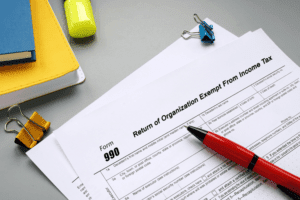What are Bond Issue Costs?
The company spends an issuance cost $ 600,000 ( $250,000 + $ 250,000 + $ 100,000) to issue the bonds to the capital market. However, it is not allowed to amortize the debt issuance cost over the bond’s lifetime over the straight-line method. The journal entry will debit debt issue expense and credit debt issue cost. Finance officers, working with their municipal advisor (MA), should understand all costs and fees, so that they can be controlled and managed throughout the financing process. A thorough discussion with the municipal advisor and other professionals involved in the transaction should be expected.
Under GAAP, bond issuance costs are typically recorded as a deferred charge on the balance sheet. This means that instead of expensing these costs immediately, they are capitalized and then amortized over the life of the bond. This approach aligns the recognition of the costs with the period in which the bond is outstanding, providing a more accurate reflection of the financial impact over time. The amortization process involves systematically reducing the deferred charge through periodic expense recognition, which is often done using the effective interest method.
This method involves calculating the interest expense based on the bond’s carrying amount at the beginning of each period, multiplied by the effective interest rate. The effective interest rate is the rate that exactly discounts the future cash flows of the bond to the net carrying amount at issuance, including the issuance costs. By using this method, companies can ensure that the amortization of issuance costs is proportionate to the interest expense recognized, maintaining consistency in financial reporting. An organization may incur a number of costs when it issues debt to investors. For example, when bonds are issued, the issuer will incur accounting, legal, and underwriting costs to do so. In essence, any expenses that can be directly attributed to a debt issuance are classified as debt issuance costs.
Accounting for Debt Issuance Costs
Shelton said that’s because the district is still paying off past bonds. As a result, the portion of the tax rate devoted to paying off debts would hold steady until 2035 even if the bond is rejected. Passing a bond further extends the time frame that voters are committed to the current tax rate. While Lee’s Summit schools need voter approval to borrow the money, the district says passing the bond wouldn’t raise the tax rate, nor would rejecting the bond immediately lower it. Companies can also raise money by issuing common and preferred stock, which represent the ownership, or equity, of the company. Preferred stocks always pay a dividend, but this is optional for common stocks.
How does the bond affect my taxes?
Examples are legal fees, accounting fees, underwriting commissions, and printing. Under U.S. GAAP, bond issue costs decrease the carrying value of the bond and are amortized using the effective interest method. The debt issuance costs should be amortized over the period of the bond using the straight-line method. To record the amortization expense, debit the debt issuance expense account and credit the credit issuance cost account. Debt issuance fees refer to expenses that the government or public companies incur in selling bonds.
When a company takes out a loan, they agree to repay the amount borrowed, plus interest, over a period of time. Debt financing can be a good option for companies because it allows them to access the funds they need without giving up equity in the company. However, it is important to remember that debt must be repaid regardless of whether or not a company is successful. This means that companies need to carefully consider whether or not they will be able to make the required payments before taking out a loan or debt.
Other spending would include taking care of basics like roofs, HVAC systems, parking lots and outdoor lighting and projects to improve security and accessibility. Because of space constraints, Shelton said, about 150 students who would otherwise attend Greenwood go to Woodland Elementary, which is about four miles away. A new elementary school would be big enough to serve those students, located on land the district has picked out in the Greenwood attendance area.
- All four Lee’s Summit school board candidates support the bond and the current board unanimously approved putting it on the ballot.
- Finance officers, working with their municipal advisor (MA), should understand all costs and fees, so that they can be controlled and managed throughout the financing process.
- These fees are crucial as they directly reduce the net proceeds from the bond issuance, impacting the company’s liquidity and financial planning.
- When a company decides to issue bonds, it incurs various costs that must be accounted for accurately.
Lee’s Summit serves nearly 18,000 pre-K-12 students as of the current school year. All four Lee’s Summit school board candidates support the bond and the current board unanimously approved putting it on the ballot. The Lee’s Summit R-7 School District is asking voters to approve a $225 million bond that would allow it to update school buildings and address deferred maintenance. Complete digital access to quality analysis and expert insights, complemented with our award-winning Weekend Print edition.
- Bonds and preferred stock do not participate in the growth of the company, because they offer fixed returns.
- The district also wants to purchase land for future schools in anticipation of predicted population growth as the Church of Jesus Christ of Latter-day Saints sells off land within Lee’s Summit.
- We need to use the total finance cost to recalculate the effective interest rate.
- This method ensures that the interest expense recognized each period reflects the true cost of borrowing, including the issuance costs, offering a more holistic view of the financial impact.
How Do You Account for Bond Issue Costs?
Hazel Grove is also one of the district’s older elementary schools and has similar size and accessibility problems, Shelton said. Just like Taylor mentioned, Goddard could get two new elementary schools if its $196 million bond passes. The total interest expense is $ 3.1 million (check Interest Expenses Column) which is equal to the total interest paid of $ 2.5 million plus the issuance cost of $ 0.6 million. Under IFRS, the company is required to recalculate the effective interest rate base on the actual cash flow. On the issued date, the company has to record the balance of the asset on the balance sheet. At the end of the year, the company will make the adjusting entry to amortize the contra-liability account.
GAAP: Amortized Assets
Let’s consider a hypothetical example of a company called “Green Energy Solutions” that is planning to issue bonds to raise capital for a new solar power plant project. In return, investors earn periodic interest payments over the term of the bond, plus the face value of the bond upon maturity. At the end of the first year, ABC will amortize the debt issue cost base over the period of 5 years. Debt issue cost is recorded as long-term assets on the balance sheet.
You can deduct interest payments on bonds from your taxable income, but dividends are not deductible. Bonds and preferred stock do not participate in the growth of the company, because they offer fixed returns. Common stocks give shareholders a right to benefit from earnings through dividends or higher stock prices. The contra-liability will be amortized over the lifetime of the debt or bond. The journal entry is debiting Debt issuing cost and credit cash paid. A bond still means that the district is taking on more debt that has to be paid off with property taxes bond issue costs over time.
Complete digital access to quality FT journalism with expert analysis from industry leaders. The bond would also be used to convert Oak Street Elementary into an early learning center. The bond would improve athletics facilities and invest in maintenance and infrastructure repairs district-wide.
How Do You Account for Bond Issue Costs
Because bonds are a form of debt, they must be repaid even if a company is making a profit or not. As such, they represent a higher risk for investors than equity investments. However, bonds typically offer lower interest rates than other types of loans, making them an attractive option for companies in need of capital.
To record the costs, you debit an account called “debt issue costs” and credit “cash.” When you capitalize a cost, you cannot deduct it as an expense all at once. Normally, you use straight-line amortization, in which you divide the total costs by the number of years until the bond matures. Each year, you debit “debt issue expense” and credit “debt issue costs” for the annual amortization amount. Many companies split the annual amortization into semi-annual or monthly transactions. The effective interest method is commonly used for amortizing bond issuance costs.
This series of transactions effectively shifts all of the initial expenditure into the expense account over the period when the bonds are outstanding. Let’s consider an example of a company issuing bonds and incurring debt issuance costs. In a private placement, you sell bonds directly to a single buyer, such as a pension fund, without registering the bond issue with the Securities and Exchange Commission. Private placement fees include the money you pay to lawyers and accountants to properly execute the sale. In a public offering, you sell your bonds to an investment syndicate for a guaranteed price. The syndicate then resells the bonds to the public at a higher price.
When evaluating the bond issuance, Green Energy Solutions should consider these costs, along with the interest expense, to determine the total cost of financing the new solar power plant project through bonds. This information can help the company make informed decisions about whether to issue bonds or explore alternative financing options. These costs will be capitalized and amortized over the 10-year life of the bonds.
Accurately accounting for printing costs ensures that all expenses related to the bond issuance are captured, providing a comprehensive view of the total costs incurred. Record the entries pertaining to the issuance of bonds in the specific fund set up to track the capital project. They can do so with no detail to describe the fees paid out of the proceeds. Under GASB Statement 34, the full face amount of the issued bond debt should be recorded in the capital project fund as an OFS. Remember that the above accounting treatment reflects the practices commonly followed in the U.S. as per U.S. International Financial Reporting Standards (IFRS) may treat bond issuance costs differently.











